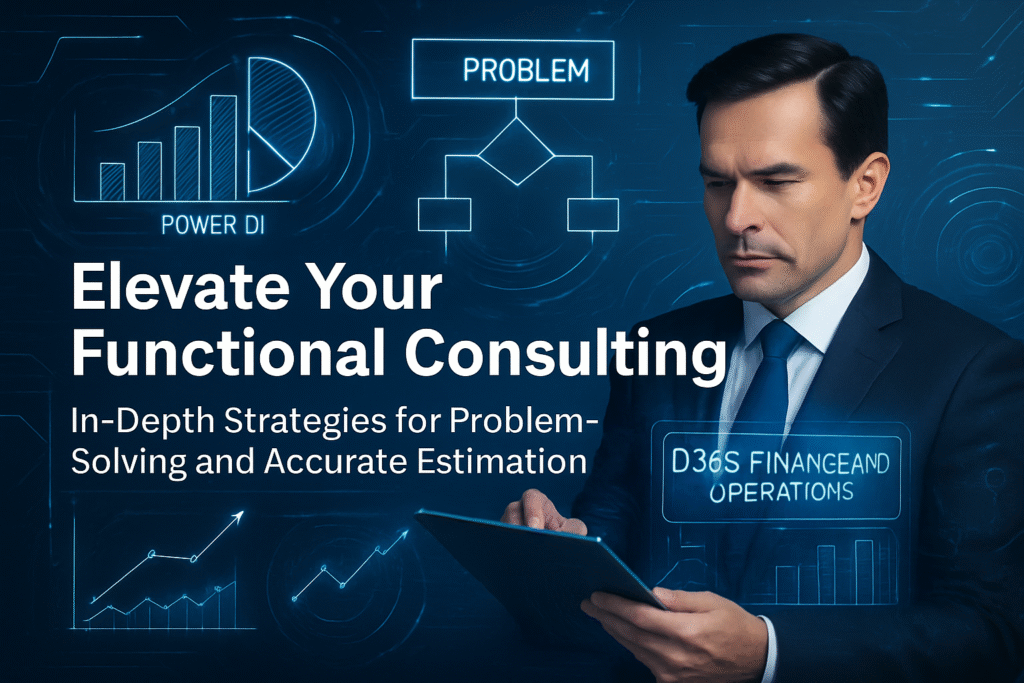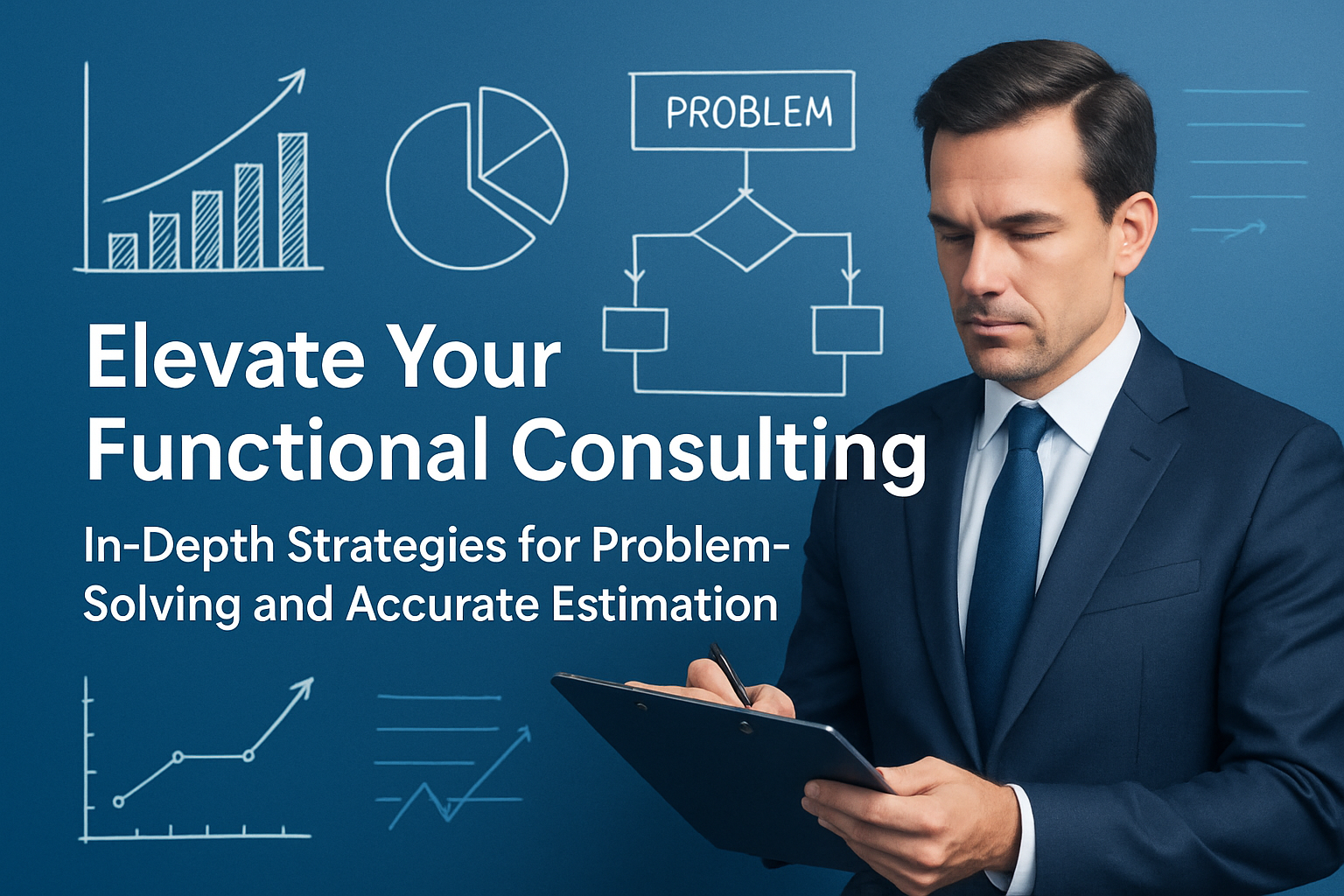
Every top-tier functional consultant knows that success isn’t just about knowing the system—it’s about how you handle the unexpected and set the stage for project wins. Let’s break down the two foundational pillars of consulting excellence, with actionable detail you can use today:
1. Structured Issue Resolution: Your Step-by-Step Guide
Why It’s Critical:
Without a clear process, even experienced consultants can lose hours untangling issues, sometimes making things worse or escalating problems unnecessarily.
What to Do:
A. Categorize the Issue
- User Error: Is the problem due to incorrect input or misunderstanding a process? Clarify requirements, retrain, or improve user documentation.
- Customization Bug: Did a recent configuration or code change break something? Isolate by rolling back, checking logs, or comparing environments.
- Business Requirement Change: Did the client’s needs evolve? Confirm if this is a change request and document how it impacts existing processes.
B. Use a Decision-Tree Mindset
- Start with the simplest checks (user error) and move to complexity (system bugs, environment issues).
- Ask structured questions at each step. For example:
- Is the error reproducible by multiple users?
- Have related updates been deployed recently?
- Does this scenario match documented use cases?
- Only escalate after gathering evidence and eliminating straightforward fixes.
C. Documentation and Communication
- Record your findings and the troubleshooting steps you took. This builds a knowledge base and accelerates future resolutions.
- When patching an issue, add detailed error messages and robust logs. This prevents repeat issues from going undiagnosed.
- Share updates transparently with stakeholders, building trust and keeping expectations aligned.
Example:
When an important business process—say, the auto-creation of a Purchase Order from an Intercompany Sales Order—fails:
- Verify if users followed the right steps.
- Look for recent code or configuration changes.
- Check whether the vendor-specific lead time setting is correctly configured and overriding as it should.
- Patch and enhance the logging so future errors are quickly detected and understood.
2. Effort Estimation & Planning: Turning Guesswork Into Science
Why It Matters:
Underestimating work leads to delays, missed expectations, and lost confidence. Overestimating can price you out or waste resources.
What to Do:
A. Clarify Scope of Work
- Is the request a bug fix, a minor enhancement, or a major process change?
- Bug fixes are usually quick if root cause is known.
- Enhancements and new requirements often touch multiple modules and need thorough review.
B. Break Down Tasks
- List subtasks: Analysis, development/config changes, testing, documentation, deployment, and follow-up.
- Identify dependencies or bottlenecks (e.g., waiting on client feedback or other team schedules).
C. Factor in Contingencies
- Anticipate possible blockers, such as ambiguous requirements, organizational changes, or system downtime.
- Include buffer time (e.g., +10–20%) for unexpected complexity or parallel priorities.
D. Align Estimates With Stakeholder Expectations
- Present your plan with clear rationale:
- “This fix is estimated at 8 hours because it involves code changes, test case development, and coordination with the finance team.”
- Review estimates in regular stand-ups or status meetings. Adjust as unknowns are clarified.
Example:
For the “sales order not creating purchase order” issue:
- Estimate time for analysis (tracing current logic, reviewing requirements).
- Add time to develop, unit test, and deploy a patch.
- Allocate time to improve error messaging and logging, ensuring sustainable maintenance.
- Communicate any lead time dependencies or client-side steps needed for final validation.
In Summary
By approaching issue resolution methodically and treating effort estimation as a structured process, you transform reactive work into strategic, high-value consulting. This not only solves immediate problems but lifts your reputation as a trusted advisor, paving the way for deeper client partnerships and consulting growth.
Ready to take your consulting game to the next level? Adopt these detailed approaches, and you (and your clients) will see results everyone can appreciate!
